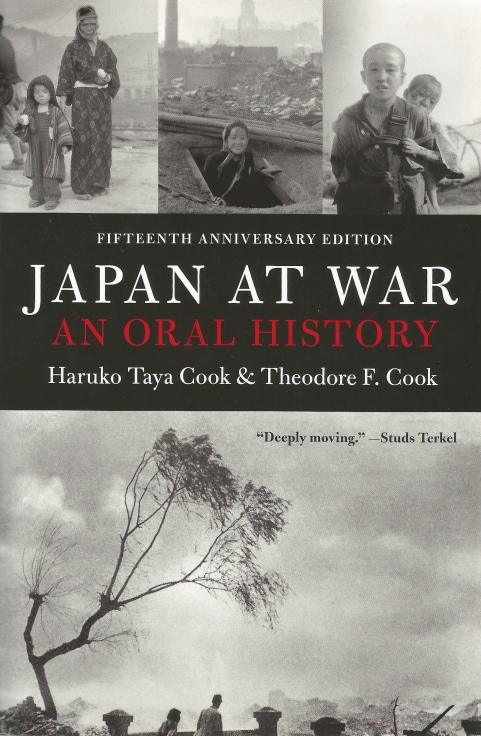

Japan at War: An Oral History

This is a really fascinating book consisting of what people in Japan said they remembered about World War II. This includes civilians and soldiers, alike, and some of the things that the soldiers admitted that they did are quite upsetting so be warned.
This 480 page book includes sections on China, a "new order," having "faith in victory, memories from the Japanese mainland, lost battles and material on the latter part of the war as things turned harshly against the Japanese military and the civilians in Japan itself.
Obviously in a book this size, and this good, there is a truly massive amount of good information so I'll just point out a few things that particularly caught my attention.
The book also includes material from soldiers and civilians that still support what Japan did during the war, that their cause was just and the war wasn't their fault. The book points out that this is shown by the fact that there is no one name for the war in Japan. Sometimes it's called The China Incident or The Great East-Asia War or something else.
The book points out that the Japanese people of the time felt they were superior to other Asians which is an attitude that helped drive their effort to "free" other areas of Asia from Western control and influence but at the same time putting them under strict Japanese control (as the Japanese had already done to Korea).
The issue of just how many Chinese were killed by the Japanese in the Nanking incident and otherwise is covered. Chinese figures run up to around 300,000 Chinese killed while some in Japan say that only maybe 38,000 or fewer Chinese died.
One of the upsetting things are those memories that involve Japanese soldiers beheading prisoners. This type of cruelty was a product of emperor worship and the brutal upbringing that members of the military were subject to themselves which including beatings, sometimes severe, from those who out-ranked them. Part of it was also due to the way most of them believed that whoever they fought were beneath them.
One of the entires is about a soldier involved in the use of gas against the Chinese.
Some of the other entires include:
Manchurian Days: A Japanese colonist in Manchuria.
Bringing the Liberals to Heel: Censorship and control of those whose views were liberal.
Cartoons for the War: Self-evident.
Building the Burma-Siam Railroad: A project where thousands of allied POWs died and around 80,000 locals died during their forced working for the Japanese.
Army Doctor: About Unit 731, one of the worst atrocities (along with the Rape of Nanking) ever committed. There's also a section entitled Unit 731.
Making Balloon Bombs. School girls were involved in making these. Instead of attending school they had to work on projects like this.
Forced Labor: Thousands of civilians from other countries, along with POWs, were forced to do hard labor for the Japanese.
Poison-Gas Island: Where the poison gas was made.
Honorable Death on Saipan: About how Japanese soldiers had been inculcated with the idea that surrendering was out of the question and that they should kill themselves before being taken prisoner. There was a concept among many civilians that the American soldiers were horrible and it was better to commit suicide than to allow themselves to fall into American hands where they thought they would be raped, etc.
There is also material on the kamikaze, of course.
There's lots more than this, of course. Absolutely a book that is worth reading.
Main Index
Japan main page
Japanese-American Internment Camps index page
Japan and World War II index page
|